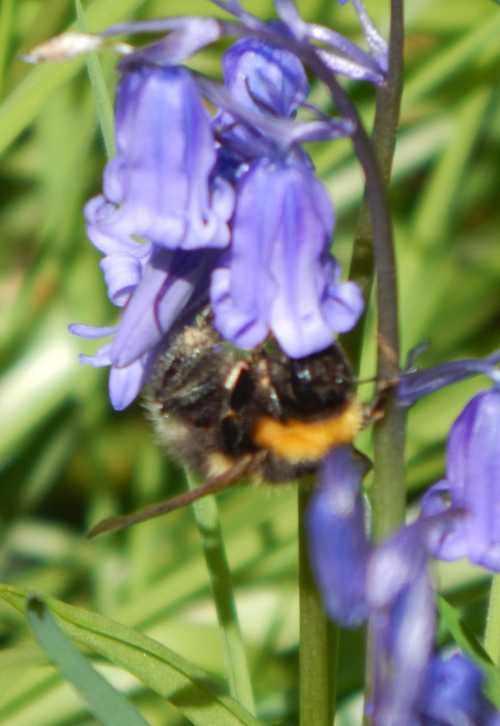Choosing Wildflowers For Bees In Shade, Clay Soil, And Coastal Locations
Following on from a previous page about wildflowers for bees, I thought it was time to add further information, following a number of queries about what to plant where, in particular species for environments often regarded as more challenging for plants and gardeners. Common questions have included:
- Which wildflowers can I plant in a shady area?
- Will wildflowers survive in my heavy clay soil?
- I live by the sandy coast, what would you recommend?
Planting Wildflowers In Challenging Conditions
Having done some research, I came up with the following lists of wildflowers for bees and butterflies, for some particular conditions. However, please note, I haven’t tested all of these myself!
Some species appear to be quite adaptable in terms of their environment, whilst others appear to be more fussy! There are some great resources available on the internet – see my links below to plant databases where you can search for ‘plants by postcode/zipcode’.
In the meantime, here are my lists:

Wildflowers Tolerant of Shade
When considering your options for a shady spot, think of
the flowers found in the dappled sunlight of woodlands (as in the image below), and wildflowers beneath hedgerows for inspiration.
 Beautiful English bluebells thrive in the light shade of woodland.
Beautiful English bluebells thrive in the light shade of woodland. Bumble bee foraging on bluebell.
Bumble bee foraging on bluebell.You may struggle with very heavy shade, however, to attract bees and other pollinators.
Agrimony (Agrimonia eupatoria)
Wood avens
Hedge Bedstraw
Nettle-leaved bellflower (Campanula trachelium)
Betony
Meadow buttercup
Foxglove
Red Campion
Ramsons / wild garlic (Allium ursinum)
 Red mason bee flying toward wild garlic.
Red mason bee flying toward wild garlic.Teasel
Tufted vetch
Columbine
St John’s Wort
Bush vetch
Wood sage
Hedge woundwort
Wildflowers Which Are Tolerant of Clay Soil
Hemp Agrimony (Eupatorium cannabinum)
Agrimony (Agrimonia eupatoria)
Betony
Bird’s Foot Trefoil
Black Medick
Meadow Buttercup
White Campion
Cowslip
 Common carder bumble bee - Bombus pascuorum on common knapweed.
Common carder bumble bee - Bombus pascuorum on common knapweed.
Greater Knapweed
Lady’s Bedstraw
Meadowsweet
Oxeye Daisy
 Davies' colletes on oxeye daisy.
Davies' colletes on oxeye daisy.
Wildflowers Tolerant of Coastal
Areas, Dry Sandy Conditions
Think of the flowers you naturally see when you are on holiday by the beach or close to the coast (in your own country, of course).
Sea Campion
Evening Primrose
Corn marigold
St John’s wort
Toadflax
Viper’s Bugloss
 Coastal leafcutter bee - Megachile maritima - female - foraging on restharrow.
Coastal leafcutter bee - Megachile maritima - female - foraging on restharrow.Kidney vetch
Common restharrow
Jack-go-to-bed-at-noon (Tragopogon pratensis)
Common Cat's-ear (Hypochaeris radicata)
Salad Burnet
Field Scabious
Selfheal
Wild Carrot
Teasel
Wild Clary
Yarrow
Yellow Rattle
How Can I Include Wildflowers For Bees And Butterflies In My Garden?
Here are some ideas:
- Create
a mini-meadow or wildflower patch. See
my page ‘lawns for bees’.
- Add
them to your rockery. Good candidates
include selfheal, ajuga, bird’s foot trefoil, evening primrose, cowslip – I have
the first four of these in my own rockery.
- Plant
them in your garden inter-mingled with your border plants. I have found this is easily achieved with a
number of species which I have experimented with in my small garden. From the lists above, I currently have poppy,
foxgloves, forget-me-not, and hedge woundwort. Teasels are on my
list to add into the border at some point.
I have seen them in other gardens, and they provide real visual interest
in a border, as well as being beneficial for pollinators.
- Fill
planters – why not? Again, there are lots
of pretty candidates that would not look out of place! Try forget-me-nots, low growing, creeping wildflowers, and poppies.
Create a
lawn for bees
If you found this page helpful or interesting, I'd really be grateful if you would share it with others - if not this page, perhaps another, such as Gardening For Bees.
Thank you so much :) .

